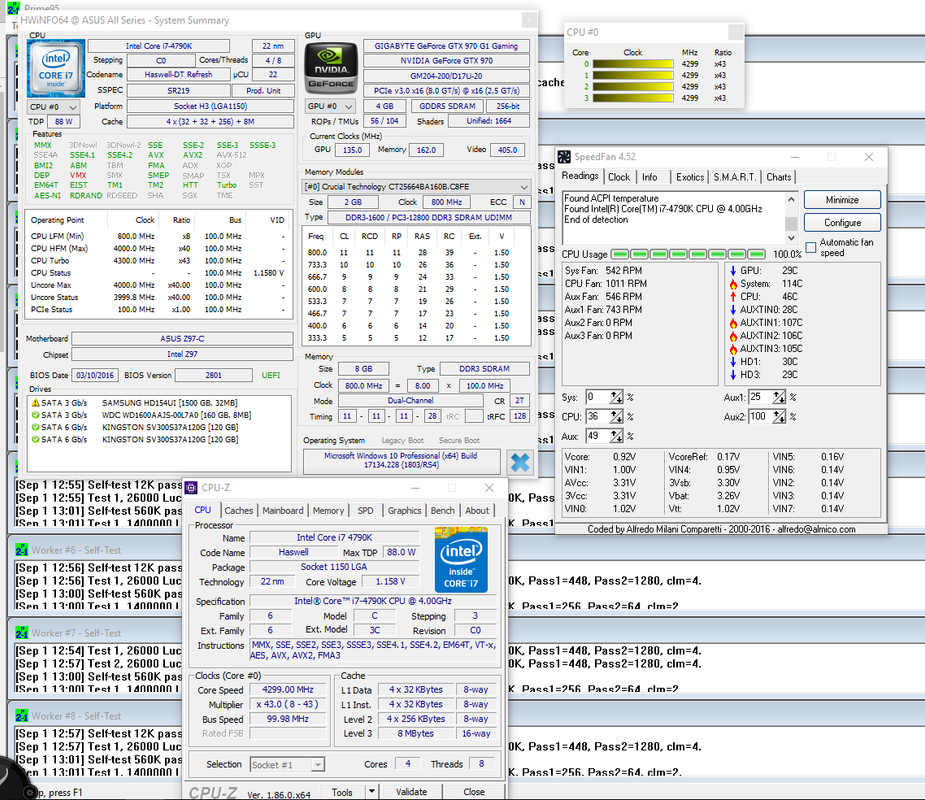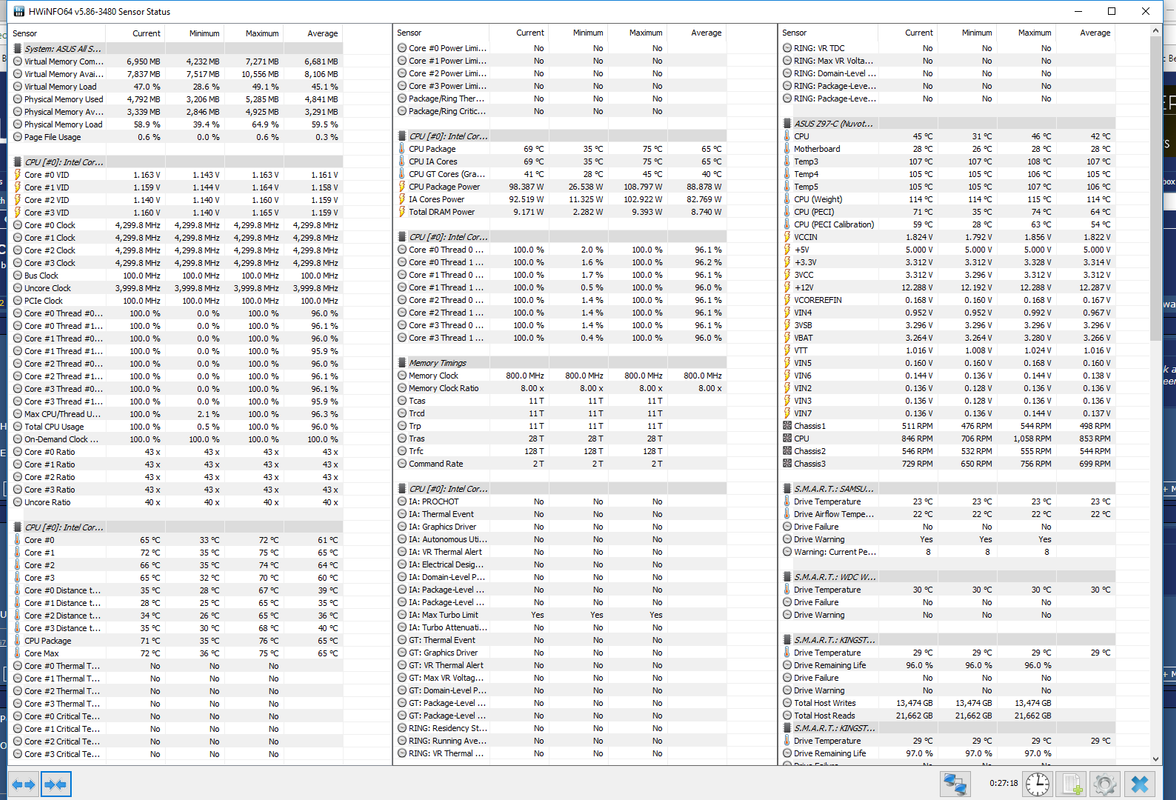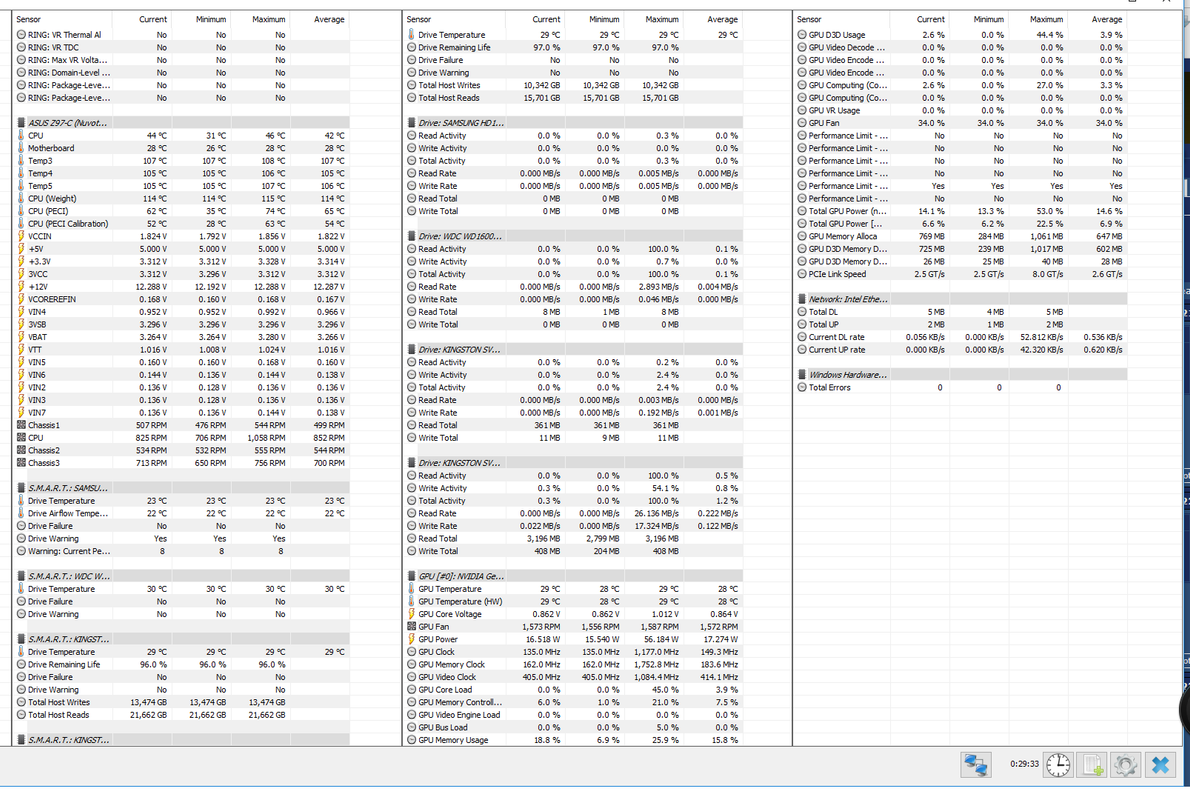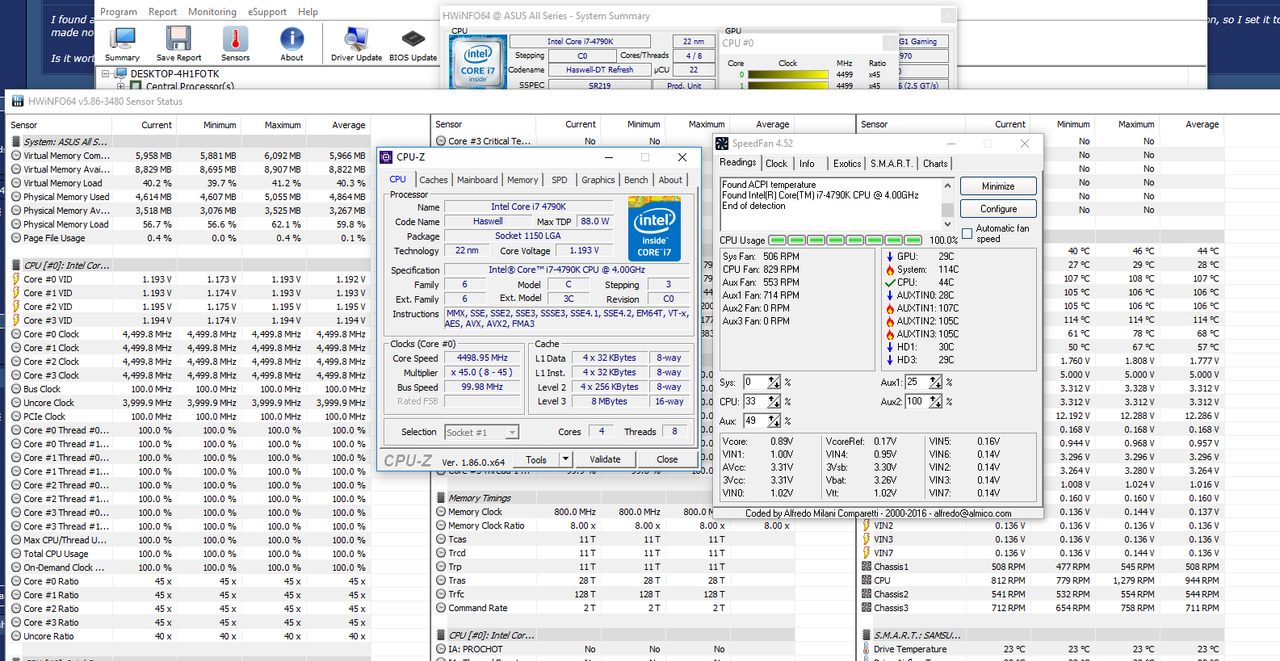- Joined
- 30 Aug 2018
- Posts
- 31
You need to take the screen shot when it's under load 100% at 43. Use hwinfo for readings so you can see the load and temps. In your screenshot above, the CPU isn't under load hence 3997mhz and 1.064v. CPU will fluctuate regularly between base clock and max clock when not under load, this isn't the same thing. You want to get an idea of what voltage your mobo is giving the CPU at an easy overclock to better understand offset required as you push the overclock providing temps are under control. Take the screenshot whilst running Prime after 10-15 minutes.
Hang on I don't understand, that is a shot of of CPU-Z and Speedfan while running Prime 95. If that's not stressing the CPU enough I could use a different stress test?
EDIT: Hang on, I get you. I'll do that now. Thanks.







